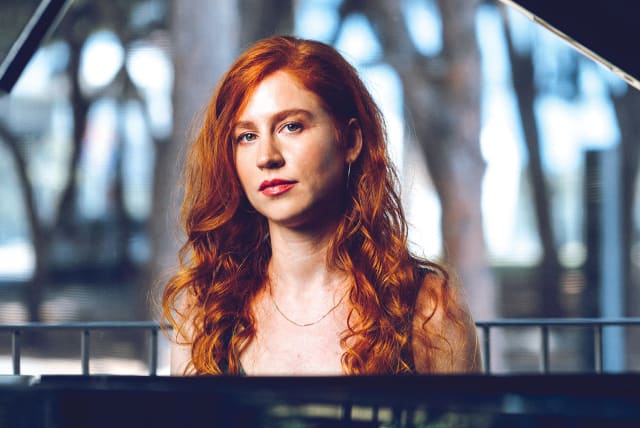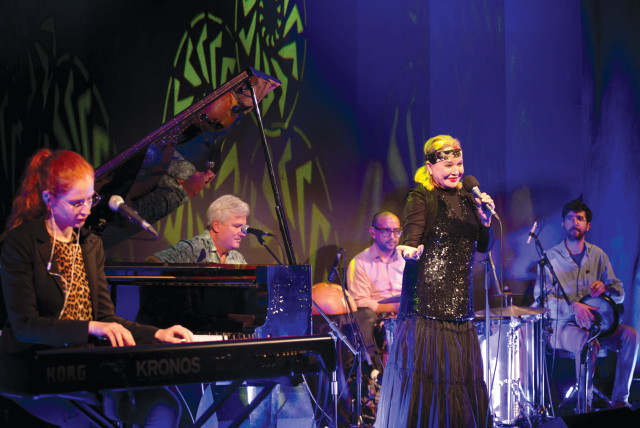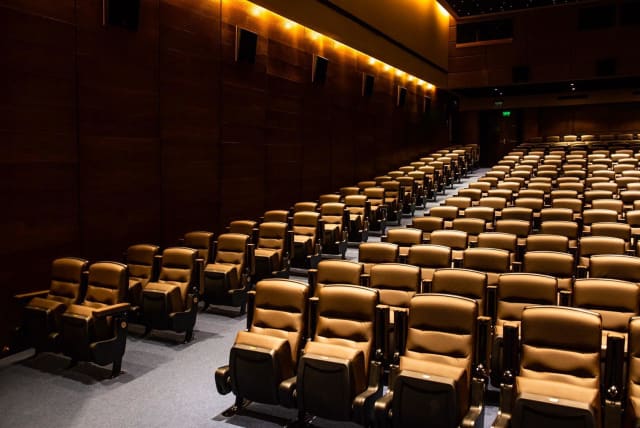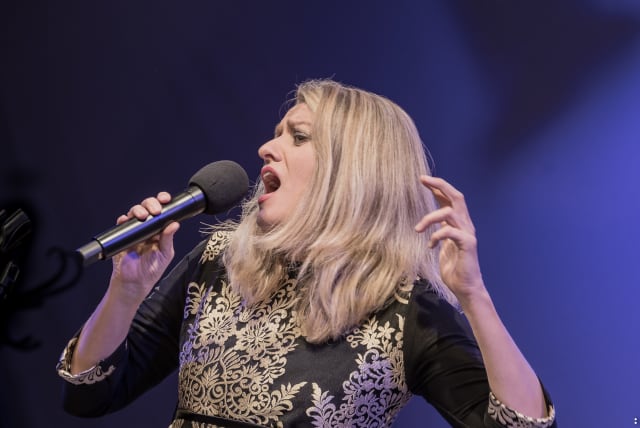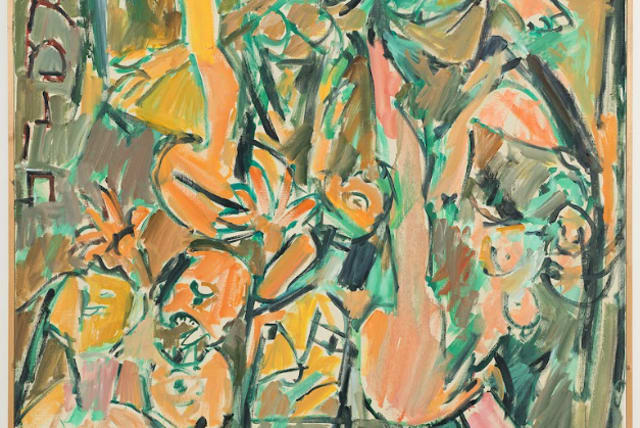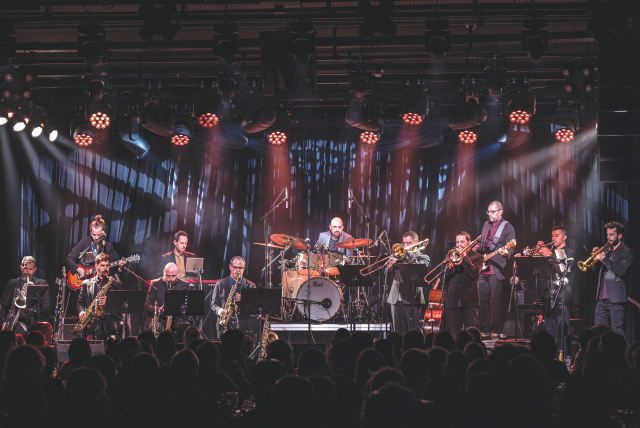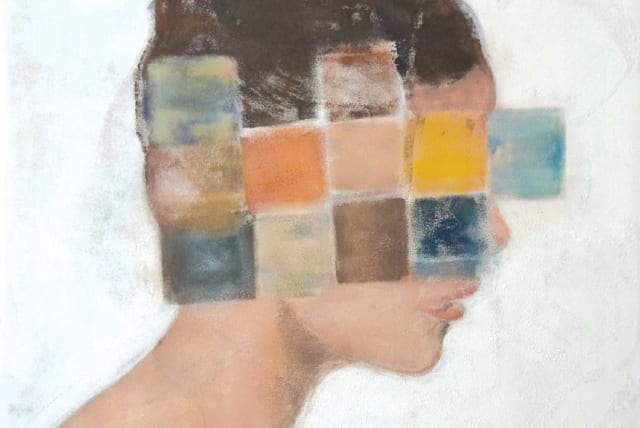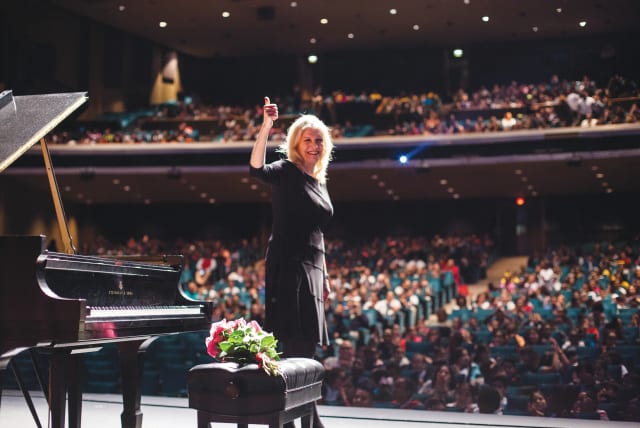Even in an ever-more-accommodating cultural world, Darya Mosenzon seems to have taken a couple of bold steps into uncharted realms.
With Hungarian blood coursing through her veins, fair skin and flaming red hair, the thirtysomething pianist-composer does not exactly look the non-Western ethnic part. Her audience at Confederation House this Thursday (June 15 at 8:30 p.m.) will, naturally, be the judge of her musicianship and whether or not she does the Andalusian musical heritage justice.
Jerusalem-born Mosenzon, who will be accompanied in the concert by her longstanding trio of veteran oud player Charlie Sabach and percussionist Hillel Amsalem, started out in strictly European classical climes. It was inarguably clear from the word go that she would follow that avenue of musical expression.
“My [maternal] grandmother was a classical pianist,” she explains. Not just her. “Ever since I can remember, I saw my grandmother playing the piano, and all her children playing music. My mother is an excellent pianist, and all her siblings play piano or some other instrument.”
That made for a very musical childhood domestic scene. “For me, Friday evenings were always about going to my grandparents for kiddush, with lots of uncles and aunts and their kids – many of them live in Jerusalem. After the meal, my grandmother and uncle would sit at the piano, and everyone would sing lieder [songs] by Schubert and Schumann. I didn’t understand a word, but I liked it,” she laughs.
In fact, over the years, Mosenzon has become something of a polyglot. “I speak a few languages, but learning German is still an ambition,” she smiles. Besides her mother tongue Hebrew, the pianist is pretty adept at English, Arabic, French, Spanish and Italian. Not bad going, even if she is yet to master the lyrics of the aforementioned classical composers’ works.
When the crisis eventually came, when it became inescapably clear to Mosenzon that she was no longer enamored with the music she’d imbibed since birth, she realized she needed to head down a different channel of musical endeavor, and find something that truly moved her and got her creative juices going.
Help came in the form of friends who led her to violinist Elad Levy, one of the prime movers and shakers on the Andalusian music scene in these parts. “I think it was only after I learned how to play Andalusian music that I suddenly understood that I had grown up in a rich and fervent tradition. When I encountered people who had grown up in a different rich and fervent tradition, that’s when the penny dropped. For me, before that, it was simply the environment in which I had grown up.”
That spirit may have been the core of her earliest formative years, but it was time to take that cultural foundation and run with it and leverage it in a very different discipline and cultural milieu.
Mind you, Mosenzon’s cultural wanderlust might also have had something to do with some of her genetic baggage. “My father listened to lots of different kinds of music from all over the world, from British 1970s and 1980s rock, and all kinds of things. So I absorbed different stuff from him.” She may have taken umpteen rhythms and textures on board, but when things got serious, she stuck to the tried and tested familial path. “When I played music, it was always classical,” she states. “That was simply what one played.”
After her grandmother helped guide her through her initial keyboard paces, other teachers were procured and the youngster made good progress. Mind you, it didn’t all run smoothly. Not every talented kid is going to knuckle down, do the practicing just the way the teacher ordered and stick to the straight and narrow throughout. Mosenzon feels room has to be left for junior maneuver.
“I teach piano myself, and I think it is so important to allow students to rebel from time to time,” she observes. “I started learning piano when I was five, but I didn’t get to a teacher who accommodated that until I was 12.”
It’s a wonder she made it this far. Many a youngster, including the highly gifted, have run into disciplinary brick walls and have summarily dropped out.
“There must have been something that made me stick to it,” she laughs. “Seven years is a long time.” Especially at that early stage of life.
Entering the world of Andalusian music
FAST FORWARD half a dozen or so years, and Mosenzon finds herself at university studying musicology, still checking out her horizons. “I studied classical music and also jazz. I wasn’t at all sure what I wanted as a musician. I think the danger of studying at an institution that teaches how to perform music is that you can be channeled in a singular specific direction. They can teach you exactly how you should play classical music.” That wasn’t going to be the Mosenzon way. “At various junctures of my life, I had to rebel and search for what I really want to do.”
The epiphany was due any moment, and it came when musician friends – students of the aforementioned Mr. Levy, –told Mosenzon about the music they were learning with him. They also played for her recordings they had made of some of the classes. That did the trick. “It was the most amazing thing I’d ever heard,” she exclaims.
Before long, she began studying with Levy and finding her way through the intricacies of Andalusian music. Later, she also studied with pianist Omri Mor, who made a name for himself across the globe for his beguiling mix of Andalusian music and jazz. The spell with Mor helped Mosenzon venture into even more areas of cultural treasures. “Omri is an incredible Algerian music pianist. He helped me open up to new things and helped me get to two of his teachers.” One was oud player Nino Bitton, who has taken on legendary status among the Algerian music crowd. “He is Moroccan, but he really lives Algerian music,” Mosenzon chuckles.
The polyglot in Mosenzon identified a kindred soul in Mor on the musical side of the communication lines. “One thing that really drew me to Omri is that he is completely fluent in these three languages – classical, jazz and Andalusian. That is my aim too, to become completely proficient in all three.”
She is certainly going for it, and a few years ago she went to the source. “In 2018 and 2019 I went to Morocco, and I performed there, at the Essaouira music festival,” she recalls with undisguised delight. It was also an opportunity to learn from local musicians, people steeped in generations of tradition, storytelling and music-making. “When I got there, I realized I had to learn from musicians in Morocco. It was a powerful experience. This is the music they live and breathe.”
Mosenzon has had that music in her blood for some time herself and, setting the lieder of Schubert, Schumann et al to one side, along with the oeuvres of the likes of Bach, Mozart and Beethoven, she got to the point where she felt competent enough to strut her own Andalusian stuff. It is, she says, an ongoing curve. “I don’t think the learning ever ends. Making a decision to get on a stage, to play, is a bit different in the tradition of North Africa. Nino [Bitton] gets his students on stage right away. That is part of the learning process. You learn as you go along. I think I sort of slipped into that approach, too.”
And a good thing for us as well. Thursday’s date at Confederation House will provide Mosenzon with an opportunity to unveil some of the material she has recorded and is currently mixing for her debut Andalusian album, with original charts inspired by the traditional body of work alongside new arrangements of staple Andalusian fare. It is, she says, the culmination of long-harbored ambitions, plenty of blood, sweat and, possibly, the odd tear.
“It is my first album, with my own original music.” All seems to be flowing in the desired direction. “To play with Charlie and Hillel in Jerusalem is a dream come true for me. They are two of the musicians I admire the most in the world, and we get on so well.” The chemistry is evident from past performances. The venue is also up there on the pianist’s bucket list. “It is wonderful to play at Confederation House, with all the great music that has been presented there, and the Old City walls behind.”
Sadly, Mosenzon’s piano-playing grandma passed away last year, but she will surely be there in spirit. “My grandmother wasn’t so strict. She wasn’t always totally involved in what and how I learned music. But she was a great influence on me.”
Mosenzon isn’t about to offload any of the numerous genre strands that flow through her unimpeded. “I still play Bach and Chopin, and jazz. That is part of me, too. I don’t feel I am betraying one culture or another. They can all live together.”
She is keen to impart that message to her own disciples and, hopefully, help to pave their way to similar eclectic creative work. “I try to teach that to my students,” she says. “When I studied, I had to learn a single style. I heard other things at home, but that never found its way into my classes.”
Suitably versed in the music of North Africa, with her Western classical music and jazzy leanings hanging about on the periphery, Mosenzon is showing the Andalusian world that she is the genuine article. ❖
For tickets and more information: *6226, tickets.bimot.co.il, (02) 539-9360 ext. 5 and www.confederationhouse.org.


